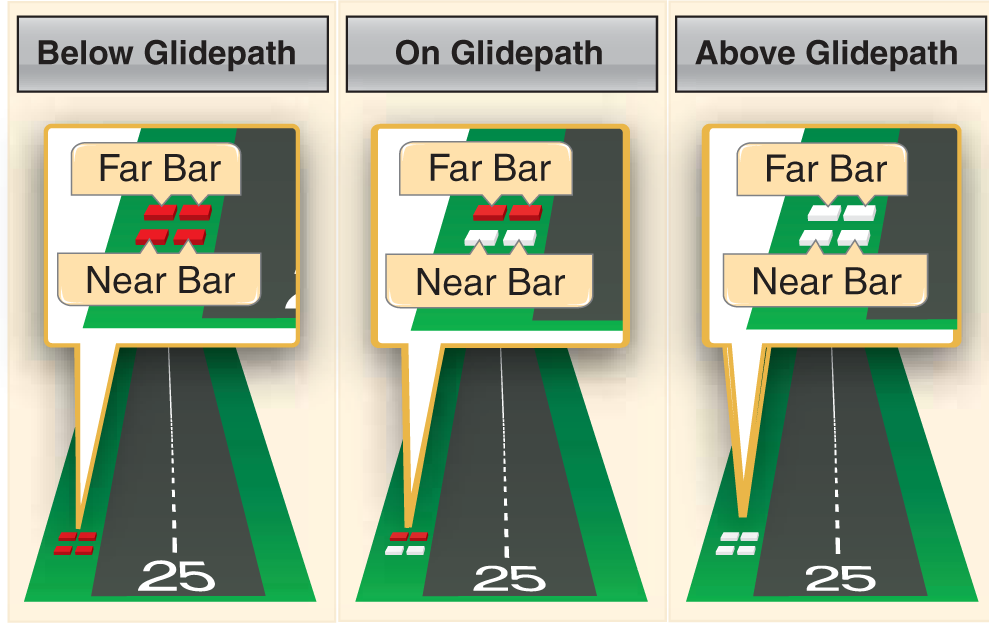It’s been a while since we’ve talked about procedures and airport operations, so today we’ll introduce three visual approach slope indicator (VASI) systems. Visual glideslope indicators provide the pilot with glidepath information that can be used for day or night approaches. By maintaining the proper glidepath as provided by the system, a pilot should have adequate obstacle clearance and should touch down within a specified portion of the runway. Today’s post comes from the Pilot’s Handbook of Aeronautical Knowledge.
VASI installations are the most common visual glidepath systems in use. The VASI provides obstruction clearance within 10° of the runway extended runway centerline, and to four nautical miles (NM) from the runway threshold.
The VASI consists of light units arranged in bars. There are 2-bar and 3-bar VASIs. The 2-bar VASI has near and far light bars and the 3-bar VASI has near, middle, and far light bars. Two-bar VASI installations provide one visual glidepath which is normally set at 3°. The 3-bar system provides two glidepaths, the lower glidepath normally set at 3° and the upper glidepath ¼ degree above the lower glidepath.

The basic principle of the VASI is that of color differentiation between red and white. Each light unit projects a beam of light, a white segment in the upper part of the beam and a red segment in the lower part of the beam. The lights are arranged so the pilot sees the combination of lights (shown in the figure below) to indicate below, on, or above the glidepath.
A precision approach path indicator (PAPI) uses lights similar to the VASI system except they are installed in a single row, normally on the left side of the runway.

A tri-color VASI system consists of a single light unit projecting a three-color visual approach path. Below the glidepath is indicated by red, on the glidepath is indicated by green, and above the glidepath is indicated by amber. When descending below the glidepath, there is a small area of dark amber. Pilots should not mistake this area for an “above the glidepath” indication. NOTE: The FAA is moving away from this system and it will be discontinued soon.

As always, we’ll have more on Thursday from our CFI. If you’d like to receive new posts from the Learn to Fly Blog via email, use the form at the top of the sidebar to sign up. And follow ASA on Facebook, Twitter, and Instagram to see what we’re working on.





